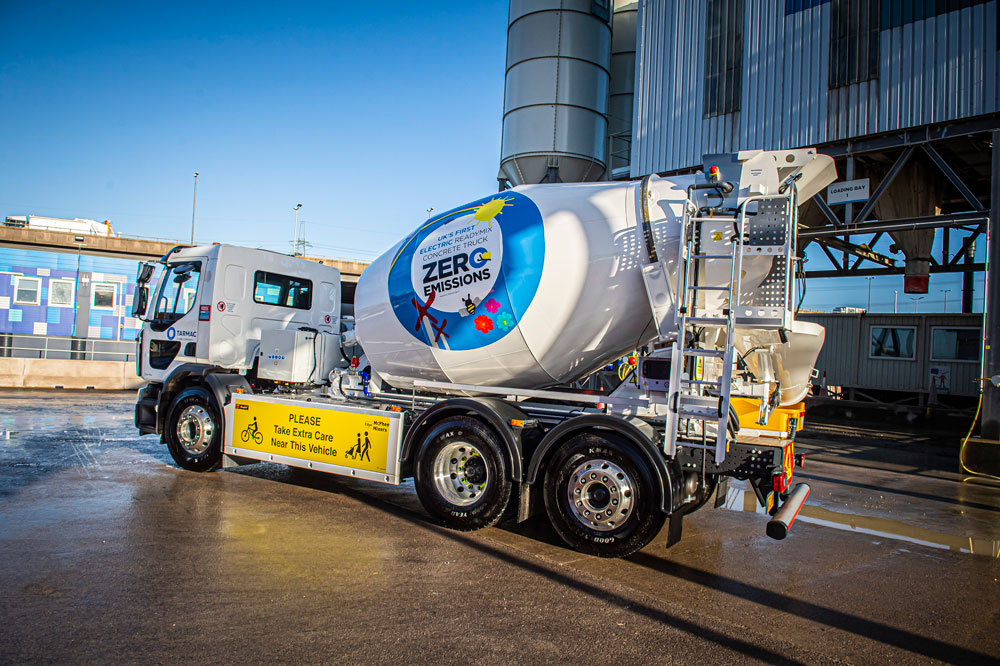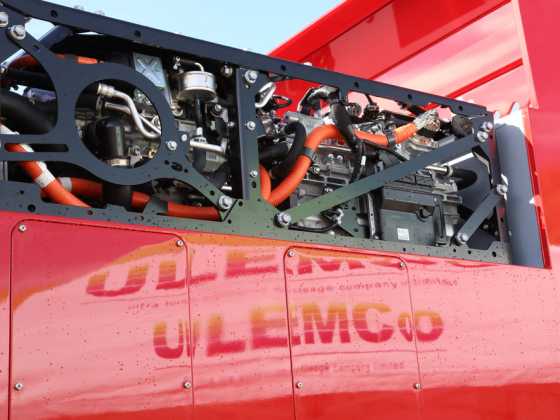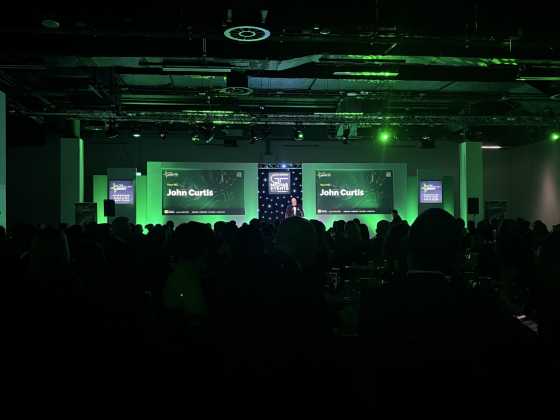Presenting the UK’s first all electric mixer

Kevin Walker, technical director at TVS Interfleet, has led on the project to launch the UK’s first electric mixer, following a successful three-month trial by Tarmac
Twenty-five per cent of the UK’s total greenhouse gas emissions are attributed to the built environment, with a pressing need for radical change to meet the government’s 2050 net zero target. At COP26, the UK Government committed the UK to achieving a 68 per cent reduction in the UK’s carbon emissions by 2030, compared to 1990 levels.
As part of their decarbonisation strategy, Tarmac is committed to leading the way and initiated a Supplier Innovation Challenge – where suppliers submit ideas to decarbonise the built environment sector. We and Renault Trucks submitted a proposal to develop the UK’s first fully electric mixer. As concrete mixers typically operate in urban areas, it was a logical place to develop a solution that would move towards reducing construction carbon emissions.
With experience and unrivalled history in manufacturing mixers, we knew a lot about how current diesel mixers operated but that little development had taken place that would allow us to move the technology on to hit the brief of launching the UK’s first electric mixer.
To be able to do this, we had to challenge every element of our conventional mixer design, its interaction with the vehicle chassis and how it operated. Along with our partners, Tarmac and Renault Trucks, we spent months in research and development.
What did we explore?
We did a review and analysis of the multiple British standards for concrete production to better understand how the drum needed to operate. Our team also delved into customer expectations regarding the quality of concrete slump, which was crucial for the project’s success as it provided information for the development of the drum operation and what was needed to deliver the same – or even greater – quality of concrete as traditional mixers whilst ensuring operational efficiency.
It was critical that we understood how the mechanics of ICE-mounted concrete mixers operated in the field. To be able to do this, we used multiple sensors and data loggers to extract energy usage over a period of months. This data was then studied to see how energy consumption could be reduced when mounted and operated through a battery electric vehicle. This was crucial to the project’s success, and the e-mixer being comparable with its diesel counterparts.
We also investigated what options we had around the water tank position that would help to deliver a lower centre of gravity, as well as how we could improve the safety of the mixer. We did this by meticulously reviewing hours of mixer rollover footage to identify and comprehend the critical factors in near misses. This allowed us to identify and comprehend the key influencers on drum behaviour during rollover situations. We were able to use the information to develop mechanical, and software-led inventions that have increased safety by a factor of three when it comes to rollovers.
Along with this research and development, we were also able to look at other areas such as the material used for manufacture of the mixer. By choosing new materials, we were able to reduce the kerb weight to be able to carry a 5.8m3, allowing the e-mixer to deliver a typical payload equivalent to its ICE counterpart.
What sets the innovation apart?
Having developed a completely new control system (HMI) and drive for the e-mixer, the result is a mixer that features no less than seven new patents. These can be used on future electric mixers, while some inventions can also be transferred to diesel-powered trucks.
Above and beyond the electrification and decarbonisation of the vehicle, it has also realised several other benefits, as described below.
Improved safety
With the water tank repositioned, the e-mixer has a lower centre of gravity for improved stability. This feature is also in conjunction with the drum rotation being electronically controlled and an improved drum restraint system which will help keep the drum in position in case of a roll-over. Previously, a 0.5G force would dislodge the drum but thanks to the new design, the figure has increased to 1.5G. These developments will also be transferred over to our diesel models.
Efficiency
The e-mixer drum rotation speed is computer-controlled, optimising energy consumption for loading, unloading and transit of different types of concrete mix. The reduction is drum rotation should result in less wear and tear, so the drum can operate for a longer period, reducing cost over the vehicle’s life.
Improved customer utilisation
As the mixer is fully electric, noise has been reduced while having zero tailpipe emissions, which are two key considerations on all construction sites. Having zero tailpipe emissions allows for the e-mixer to be driven inside of buildings without the need for extraction fans for diesel fumes.
In fact, the e-mixer has been so successful in reducing noise, that for precautionary safety reasons, a white noise sound is being retrofitted for going forwards and backwards.
Lasting legacy of the innovation
The e-mixer has just completed a successful three-month real-world trial and is now in full operation from Tarmac’s Washwood Heath site.
Results from the trial are positive, with the e-mixer saving five tonnes of CO2 from being released. In full operation, the e-mixer expected to save 42 tonnes of CO2 annually, with zero emissions per mile compared to 1.55 kg of CO2 per mile for its fossil fuel equivalent.
As well as savings in carbon emissions, e-mixers also offer the construction sector further benefits, including being exempt from ULEZ zones, with significant cost savings on offer when running a fleet within urban areas.
We’re already working on further advancements to the e-mixer, including enhancements to the software to allow for the e-mixer drum to be operated and controlled remotely. Many of these innovations are also being considered for application to diesel models, extending their benefit beyond their BEV starting place.






